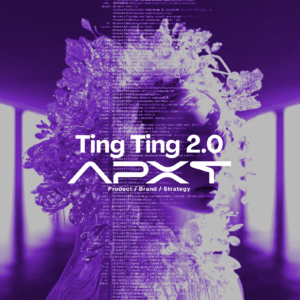Perhaps nowhere is this balance between tradition and innovation better expressed than in Formula 1 racing. For more than a generation, F1 cars have retained their open-wheel, open-cockpit design. But before cockpit design let’s explore what it means to approach design decisions startegically.
In the ever-changing world of product design, there’s one nagging issue: how do companies come up with something new and fresh while staying true to their core identity? It’s all a fragile little balancing act between evolution and revolution. Probably the most popular method-and arguably most practical one-consists of the evolutionary process: making considered, minor updates in order to keep the existing design languages going.
This is not taken to be uniform across the different domains of design. While product design applies the theory of evolution in its design methodology, brand identity design embraces revolution that is willing to take bold leaps to reinvent a brand’s image. In this blog, we shall investigate the reasoning behind these choices and how human perception about products and brands influences justification to either retain or revolutionize design decisions.
Power of Consistency in Product Design
When one talks about product design, there is a reason why the evolutionary approach is more common. In designing new products along existing product lines, the design often retains certain elements of the design language, be it color palette, typography, shapes, or the overall aesthetic feel. It is this consistency that keeps the brand recognizable and builds familiarity and therefore trust among consumers.
Think of Apple’s product line, for example. From the iPhone all the way up to the MacBook, there is a minimalist aesthetic to the device-a language of clean lines and an evident focus on user experience. As each new iteration of each of these products launches, the core of the product design remains the same. This doesn’t just reinforce Apple’s brand identity, but it also makes their new products instantly recognizable as part of the Apple family.
Consumers are creatures of habit; they find comfort in the familiar. When they see a new product that still holds on to some familiar design cues, it provides a sense of continuity and reliability. It is rather like a visual handshake between brand and consumer-a nod to shared history and mutual understanding. That is why changes in evolutionary design have a better ring to product design more often; they build upon the equity of the brand rather than start from scratch.
The Case for Revolutionary Changes in Brand Identity
On the other hand, brand identity design often welcomes more radical changes. Unlike product design, which benefits from a stable and recognizable design language, brand identity can afford, and sometimes necessitates, a more revolutionary approach to stay relevant in a rapidly changing market. A brand might undergo a complete overhaul of its visual identity—changing logos, color schemes, and typography to signify a new direction or philosophy.
Take Pepsi’s logo redesigns* over the years as an example. Each iteration has brought significant changes, often signaling a shift in the brand’s market positioning or strategy. These revolutions in brand identity are bold statements that can capture attention, generate buzz, and reposition a brand in the minds of consumers. While these changes can be jarring initially, they often mark a necessary evolution in response to market trends, consumer preferences, or broader cultural shifts.
Unlike product design, which benefits from incremental updates that build upon an established foundation, brand identity design is about perception and narrative. When a brand decides to change its identity, it’s telling a new story—a story that may require a fresh visual language to communicate effectively.
*As a funny side note: if you are not aware of the meme-level of infamous Pepsi design strategy from 2008 you can find it here.
The Case for Revolutionary Changes in Brand Identity
By contrast, brand identity design is often open to more radical changes. Unlike product design, which benefits from stability and a recognizable design language, brand identity can often afford-and sometimes needs-a revolutionary approach in order to stay relevant in an ever-changing market. A brand will change everything: new logos, new color schemes, new typography to state its new direction or philosophy.
Consider, for example, the redesigns over time of Pepsi’s logo. Each has marked a sea change, generally to proclaim some change in the brand’s market positioning or strategy. Revolutions of this nature in brand identity are daring statements that gain attention, generate buzz, and reposition a brand in consumers’ minds. Though such changes may be jarring initially, they are often a necessary step in evolution in light of market trends, consumer preference, or broader cultural shifts.
While product design iteratively improves with each release building on a strong base, brand identity design is all about perception and narrative. In changing its identity, a brand tells another story, sometimes better told by a different, fresh visual language.
Tradition vs. Innovation in F1 Racing: A Different Kind of Design Evolution
Perhaps nowhere is this balance between tradition and innovation better expressed than in Formula 1 racing. For more than a generation, F1 cars have retained their open-wheel, open-cockpit design even as the advance of automotive technology has made it fully justifiable to adopt a more enclosed, more appropriately aerodynamic form. So it will remain, not through inability to progress technologically but out of a traditionalistic bend and deep devotion to the sport’s heritage.
Yet, even with such apparent conservatism, F1 cars of today look more like flying saucers from the future compared to the race cars in times past. This Botticellian transformation within the contours of tradition underlines how design may push the envelope while staying securely fastened to a core identity. The sport’s serious commitment to safety, aerodynamics, and speed thus translated into giant leaps-carbon fiber construction, hybrid power units, and complex aerodynamic bodywork-which utterly resurfaced the look and performance of F1 cars. Yet, the open cockpit would remain non-negotiable in design-as symbolic of the heritage of the sport.
The case of F1 shows that even in strictly maintained traditions, there is always room for innovation. The sport is always changing and evolving, but its iconic elements have stayed this way so that fans could identify it instantly. That is just a great example of how design can be revolutionary and evolutionary depending on the point from which one perceives it.
Human Perception and Justification of Changes in Design
Ultimately, decisions about the retention or revolutionizing of design features in either products or brand identities are human perceptual issues. Our brains learn to recognize patterns and derive comfort from the familiar. A brand that speaks a coherent design language across products forms a strong mental link with consumers. This can achieve coherence in the brand experience in which every new product seems a natural addition to the portfolio.
But where brand identity is concerned, change may be interpreted as a harbinger of advancement, of innovation, or of a new beginning. This then, is also where revolutionary redesigns shatter old perceptions and enable a brand to shed outdated images and get across to fresh audiences. It’s a risk-one that shall pay dividends provided the gamble is made judiciously.
Conclusion: Finding the Right Balance
Design-whether in product or brand identity-is a delicate balance between evolution and revolution. Brands have to make considered choices as to when they should rest on familiarity and when they move towards change. It is here that an understanding of human perception, of how consumers relate to the visual, helps make such decisions with certainty that evolution or revolution will indeed work with the long-term strategy of the brand and resonate with its audience.
At Apxt Consulting, we help brands make complex decisions in design, balance tradition with innovation to create timeless, forward-looking products and brand identities. Strategic design is every change-subtle or bold-that reinforces the core values of a brand while adapting to a continuously changing market landscape.



